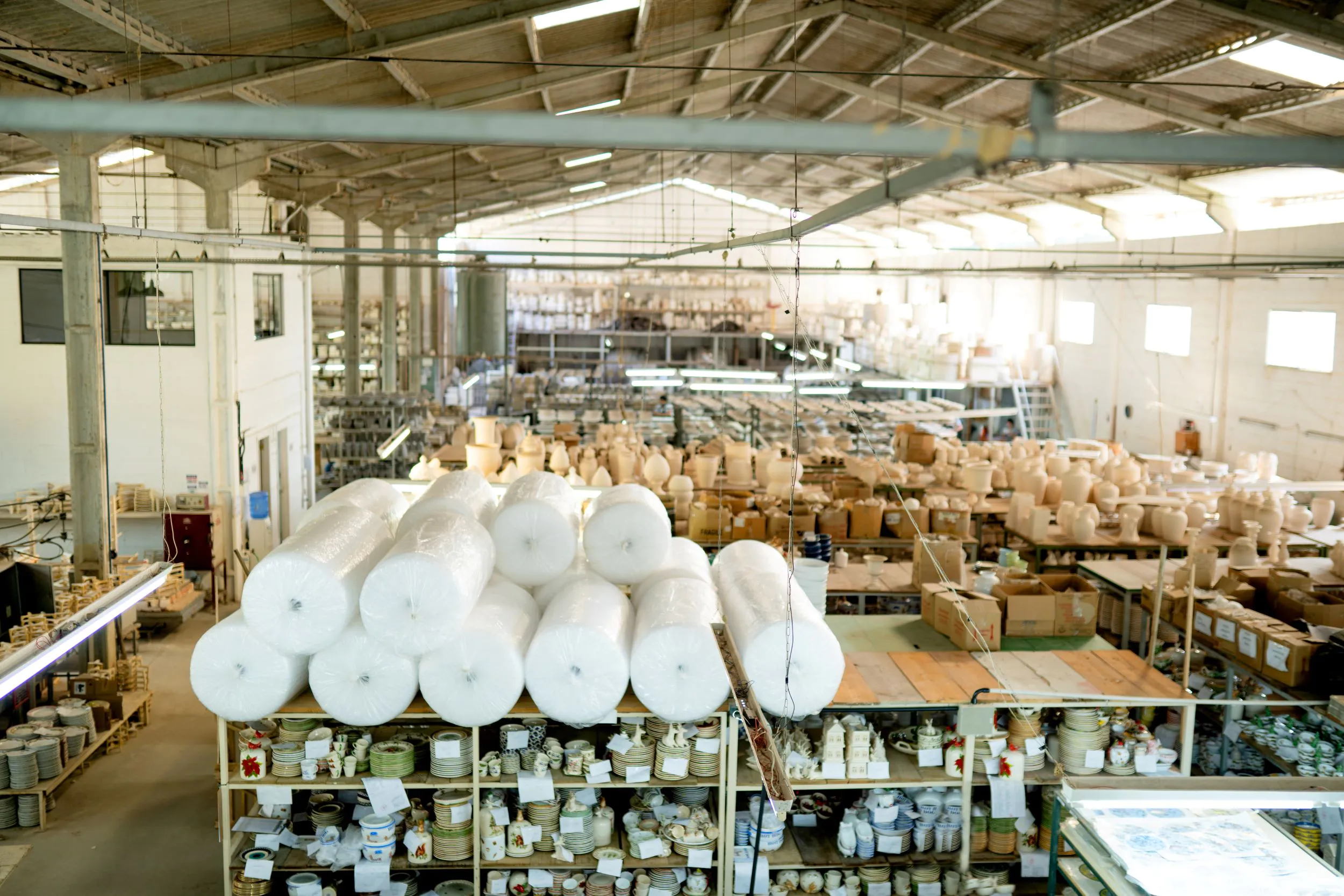The global ceramics market and Industry 4.0 both play important roles in the other’s operations. Industry 4.0 technology and practices can substantially improve manufacturing processes, while advanced ceramic components are highly useful to Industry 4.0 technologies. This provides opportunities for businesses in both sectors as demand for automation and other solutions continues to rise.
An Overview of Industry 4.0
Industry 4.0 is an approach to manufacturing that takes advantage of the wealth of technological advances that have been developed over the past decade. Also known as the Fourth Industrial Revolution or 4IR, it uses digitalization and connectivity to improve efficiency and reduce waste and downtime. Industry 4.0 involves elements such as the Internet of Things (IoT), AI, big data, analytics, machine learning, and other advanced technology to automate systems and improve monitoring, quality control, and other processes.
A 4IR system can involve many different elements. Automated machinery uses cameras and sensors to operate with precision and collect data on operations. That data can be transmitted wirelessly via the IoT, and from there can be analyzed to monitor performance, determine optimal operating procedures, scan for defects, schedule preventative maintenance, and more. AI can help with this analysis and prediction significantly. AR and VR can be used for training, remote operation of dangerous or difficult-to-access machinery, and troubleshooting. Each one of these aspects of Industry 4.0 brings its own benefits and can often be used independently, though the more fully integrated a factory is the stronger performance it can achieve.
Numerous companies around the world have adopted Industry 4.0 practices, with many considering it to be an important strategic priority, especially when faced with challenges brought on by the COVID-19 pandemic. 4IR implementation allowed businesses to maintain production while observing physical distancing practices and coping with reductions in staff, as well as dealing with other pandemic-related challenges. In more normal times, the technologies and strategies enable companies to improve their operations and gain an edge over the competition.
Global Ceramics Market Summary
The global ceramics market was valued at almost $240 billion last year. It’s expected to see healthy growth over the next several years and by 2030 will be worth nearly $360 billion. The construction sector accounts for the largest share of demand in the ceramics market, making use of tiles, bricks, sanitary ware, and other ceramic materials and products. Following that is the industrial sector, where ceramics are used in a wide range of applications for the chemical, metallurgy, energy, and mechanical industries, among others. Ceramics have many qualities that make them useful in an industrial setting, such as resistance to chemicals, temperature, and corrosion, as well as their hardness, insulation properties, and compressive strength.
Advanced ceramics are made of inorganic, high-purity compounds and are designed to have specialized properties suitable for industrial applications and other uses. Some of these products are as strong and electrically conductive as some metals, for example. Their resistance to thermal expansion reduces the risk of faults occurring in the material and causing something to break or otherwise fail. Advanced ceramics are commonly used in aircraft, vehicles, and armor, as well as in medical technology, machinery, and more. The medical industry is expected to be the fastest-growing consumer of ceramics over the next several years, both because of ceramic’s usefulness in tools and medical instruments and because of its value in implants and other items that are used inside human bodies. Its chemical inertness and wear resistance make it an ideal material for these applications.
The Asia-Pacific region is the largest consumer of ceramics, accounting for roughly 40% of the global ceramics market. Its rapidly growing manufacturing sector puts ceramics in high demand, particularly in the case of semiconductor manufacturing where advanced ceramics play an important role. North America and Europe also utilize significant amounts of ceramic products — residential and commercial construction are on the rise in North America, helping drive demand for construction materials, tableware, and other ceramics, while Europe both manufactures and uses high volumes of tiles for roofing and other applications.
Industry 4.0 in Ceramics Manufacturing
Ceramics market manufacturing processes are typically highly automated but traditionally not connected to each other. The IoT allows for easier flow of data between machinery and equipment, making processes more efficient and reducing the need for manual intervention. It also simplifies the data collection and analysis process. The manufacturing process can be controlled by a centralized system, which not only improves efficiency but can also monitor quality and color during the process, making adjustments to ensure consistency between items.
Digital twinning is another useful capability of 4IR. A digital twin is a digital simulation of a product or process that can predict how the real-life version will perform. It uses real-world data along with machine learning to make predictions that help manufacturers understand how certain changes will affect performance, predict problems that might arise and when maintenance will be needed, and otherwise perform tests without needing to disrupt the actual manufacturing process or make costly investments that may not produce the desired results.
This can be particularly beneficial for advanced ceramics manufacturing, where a significant percentage of products either do not pass quality control or require post-sintering machining in order to be within very fine margins of error. A digital twin of the sintering process used to produce advanced ceramics can help refine the process and reduce waste from products that don’t meet exacting requirements.
There are many other advantages of Industry 4.0 that apply to any manufacturing sector. Intelligent systems can reduce energy use by calculating optimal production levels and by detecting when machinery is not in use. Automation reduces or eliminates pauses between phases of production, and reduces the number of workers needed on site at any given time. Quality improves as machinery and software tend to be less error-prone than their human counterparts, and costs fall as factories are able to produce more while using fewer resources and creating less waste.
Advanced Ceramics in Industry 4.0
The specialized qualities of advanced ceramics, particularly their resistance to temperature and wear, make them useful components in 4IR operations. Ceramics can be less susceptible to wear than some metals, so ceramic parts can be incorporated into machinery and electronics to reduce the frequency with which parts need to be replaced. This is particularly useful in situations where robotics and automation are being introduced to extreme environments.
Advanced ceramics are also useful in additive manufacturing for rapid prototyping and the production of unique, custom components that need to withstand certain environmental pressures. When individual components are needed for R&D or other small batch production, additive manufacturing is able to minimize waste and quickly produce the needed items. Advanced ceramic components are also used in IoT infrastructure, facilitating the interconnectedness that is a key aspect of 4IR.



